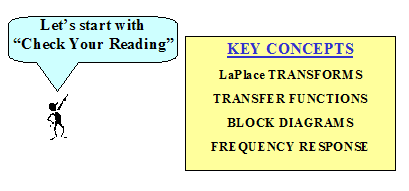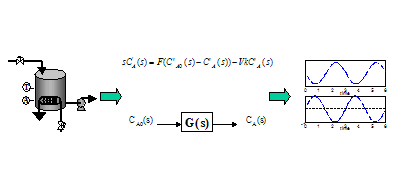

Chapter 4
Modelling and Analysis for Process Control
Home
Index
Check Your Reading Study Questions Thought Questions
The questions will be categorized according to the most relevant of the five key concepts.
| Laplace Transforms | Transfer Functions | Block Diagrams |
| Stability | Frequency Response |
 |
 |
| Check Your Reading |
Solidify the Concepts |
| 4.1 Which of the following are reasons for using Laplace transforms in process control? |
Laplace Transforms |
| 4.2 Complete the following statement. |
Laplace Transforms |
| 4.3 For the following differential equation, select the Laplace transform of the equation. |
Laplace Transforms |
| 4.4 Select the output response of a process whose only dynamics are a pure dead time to a step input at t = 20 . We do not know the value of the dead time. |
|
| 4.5 A transfer function provides a model of: |
Transfer Functions |
| 4.6 Complete the following statement: An asymptotically stable system ... |
Stability |
| 4.7 What can be determined from the following transfer function? |
Transfer Functions |
| 4.8 Complete the following statement: A block diagram is ... |
Block Diagrams |
| 4.9 Frequency response is used in the analysis of dynamic systems because... |
Frequency Response |